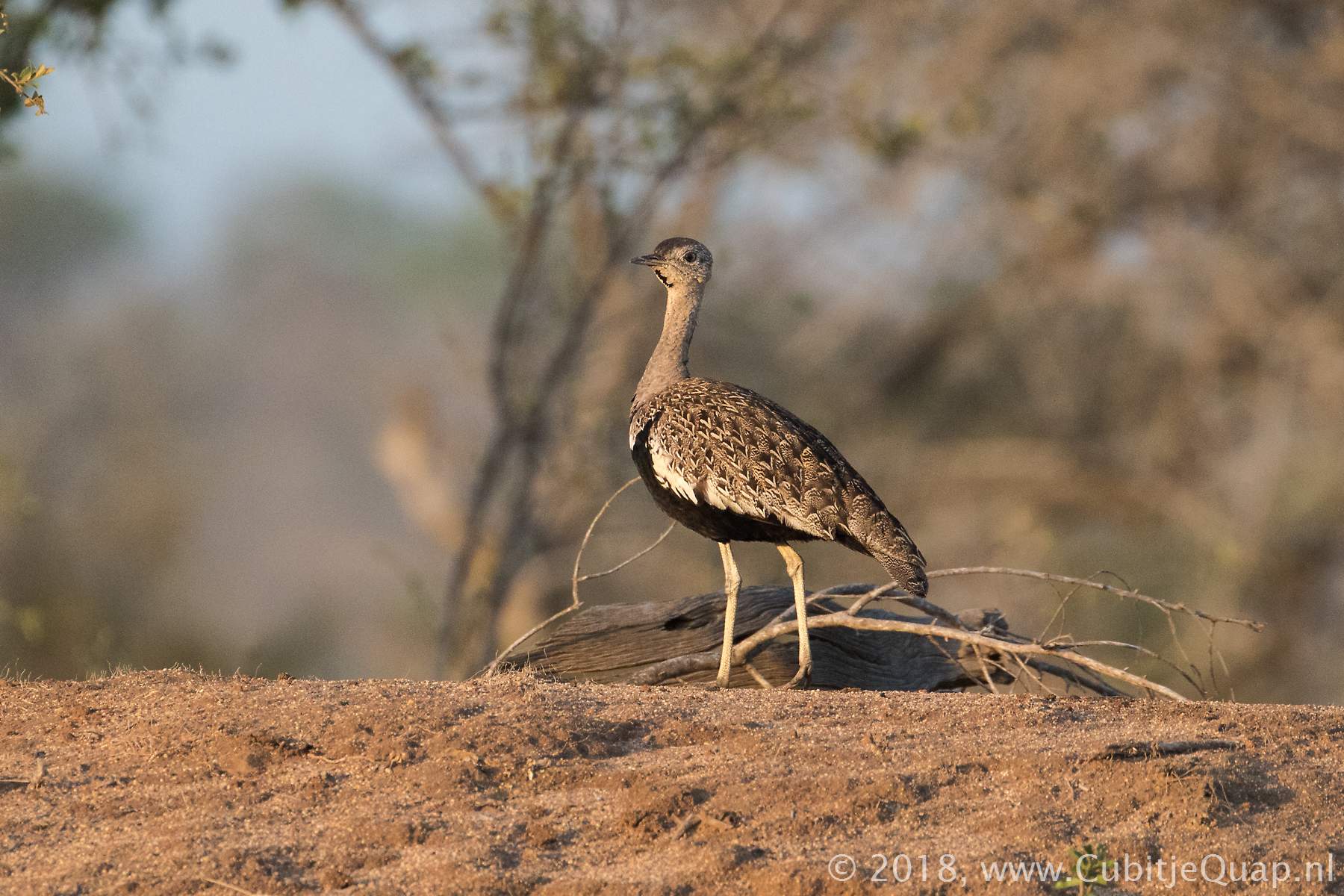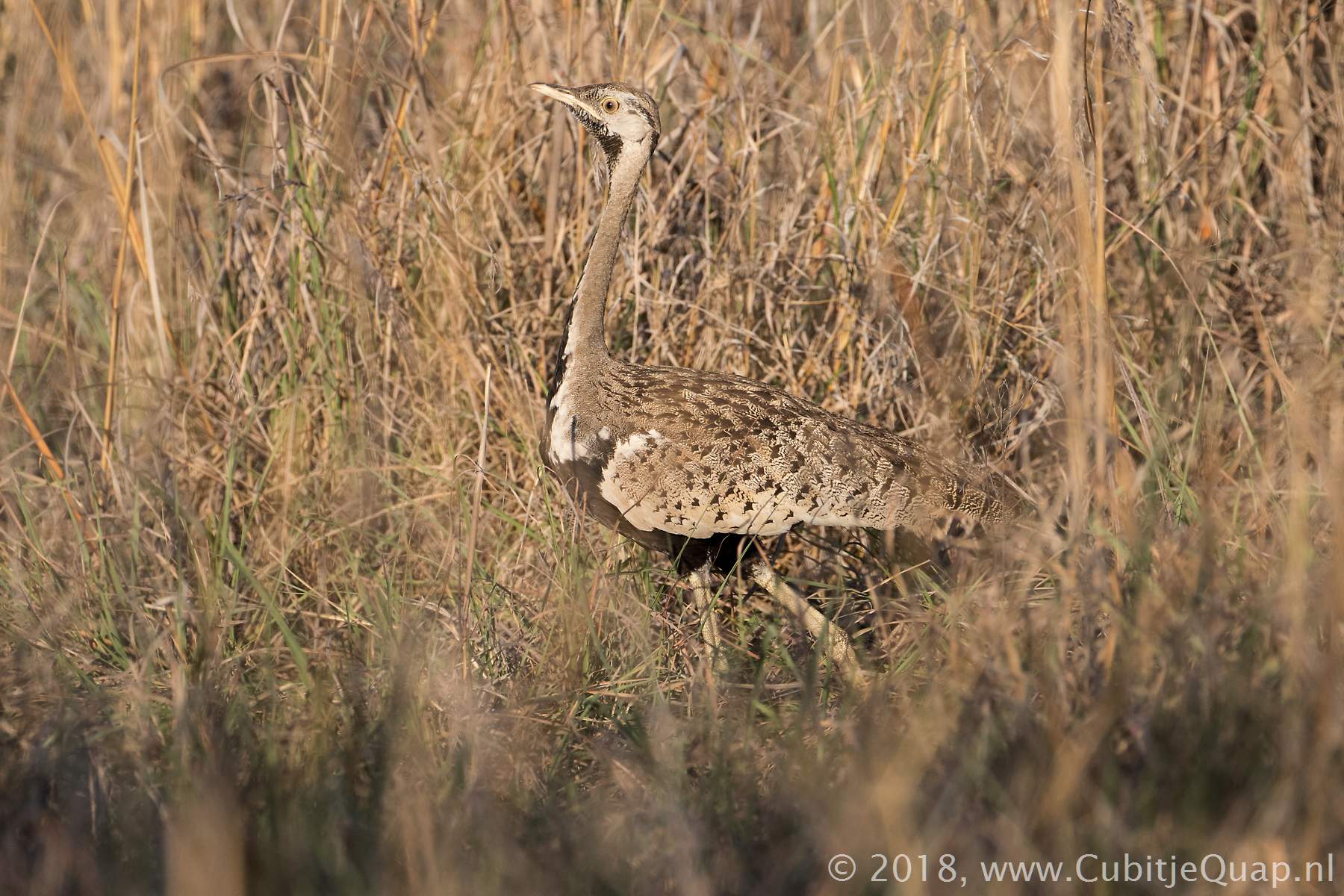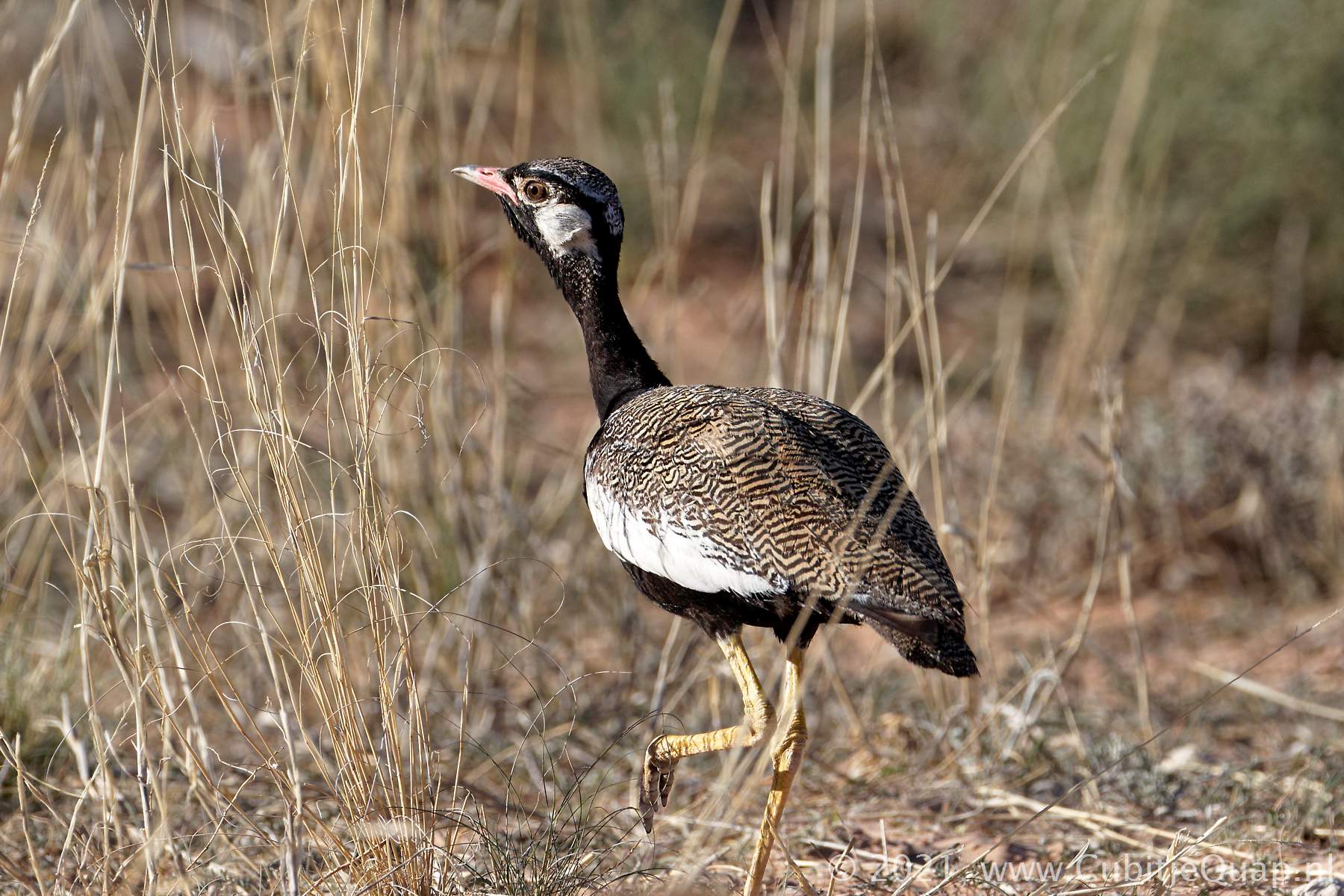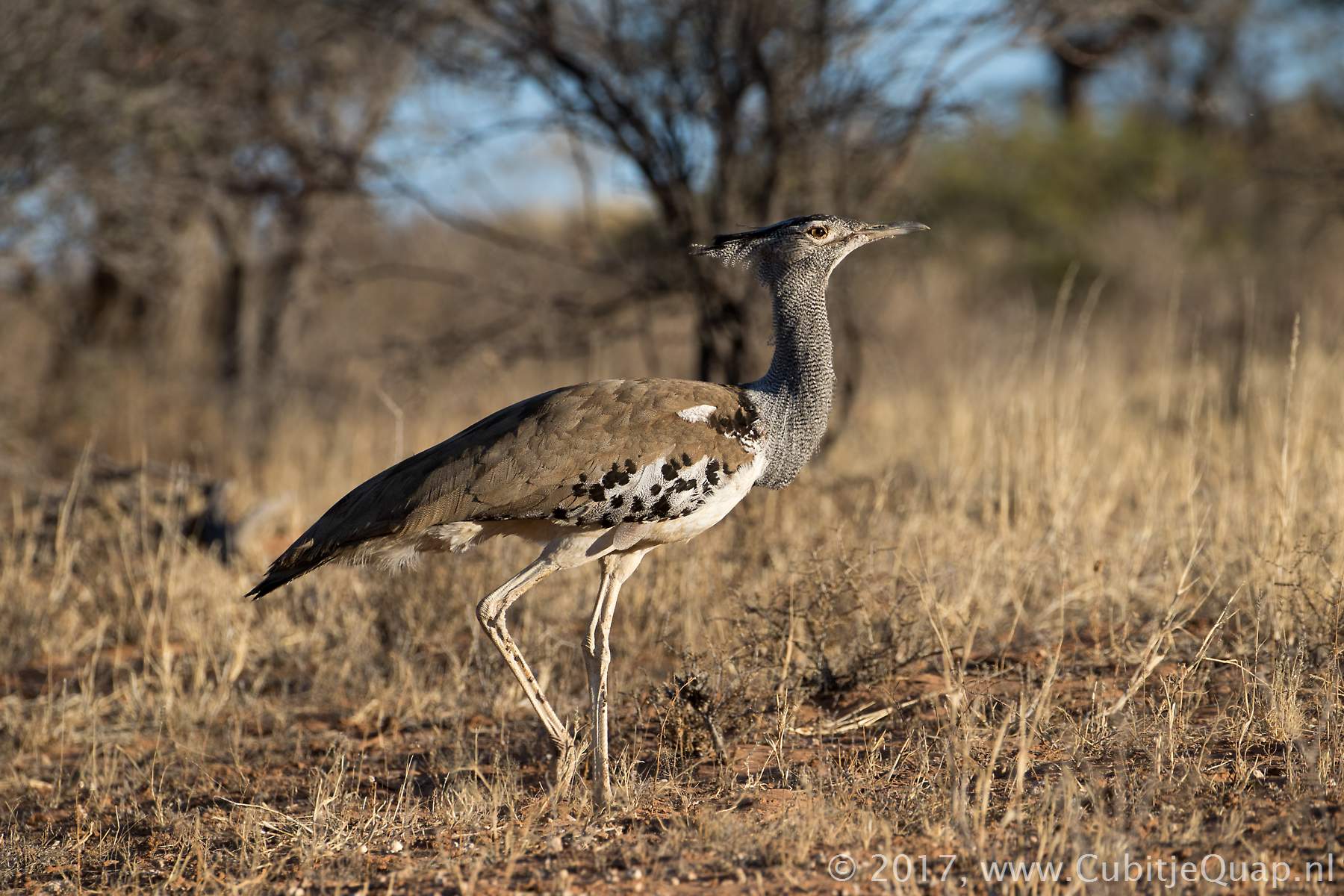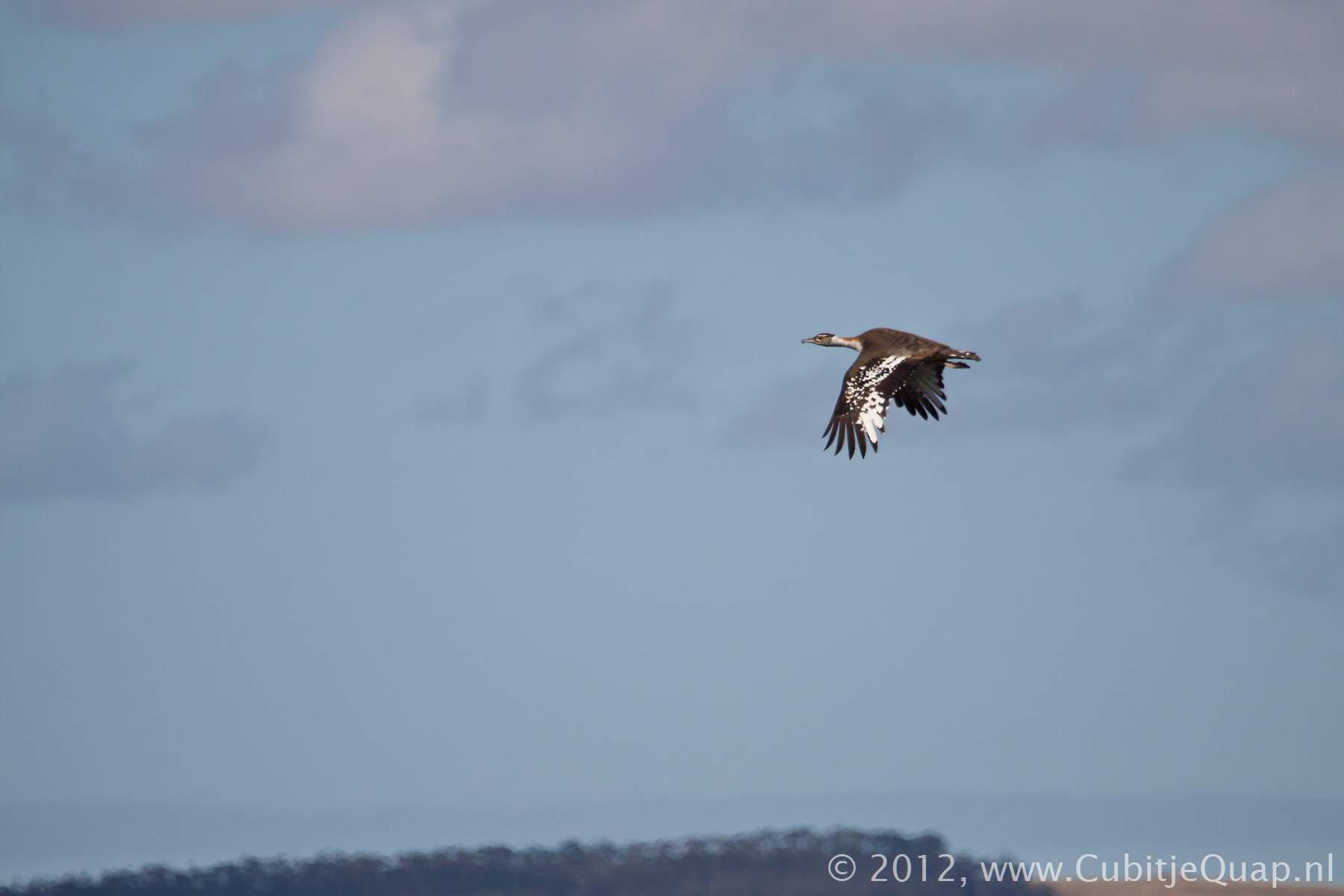Bustards and korhaans Information page
Description
Large birds with long legs with long toes, long necks, and pointed wings. Unlike other birds, they don't have a rear toe, so they can't perch in trees. They rarely fly, instead they stride though the grass or stand motionless looking for food like insects, lizards, and plants. Bustards are usually a speckled or streaked brown or gray on their uppersides to help them blend in with their surroundings. They are a lighter color on their undersides.Terrestrial, living mainly in dry grassland areas. Omnivorous and opportunistic, eating leaves, buds, seeds, fruit, small vertebrates, and invertebrates.
Scientific names
Ardeotis = heron-like bustardNeotis = new bustard
Lophotis = crested bustard
Afrotis = African bustard
Lissotis = smooth bustard
Small bustards and korhaans
Males and females have different colouring. For some species the females are difficult to tell apart. they have broad, rounded wings with slotted tips and show a slow but deliberate flight pattern with the neck extended.. Ususally they fly only very short distance. Some species give carrying and croaking calls at dawn and dusk, others often call from aerial circuits.They are onmivorous, pecking most of their food directly from the ground. They are generally water independent, but they can drink from standing position (unlike bustards). Thye may sunbathe by lying flat with the wings outstretched and they will regularly dust-bathe in soft sand.
When disturbed, they run off and crouch with the head lowered. In defence, they wil luse the 'shock display', where the wings are suddenly flared with the upper wing angled forward or accentuate its markings, and the tail is cocked and fanned.
No nests are built. 1 - 2 yellow-olive or whitish eggs with dull brownish, greyish or reddish markings are laid on bare ground in slight depresions, sometimes clse to a rock for camouflage. Incubation is done by the female alone. In defence of a nest, the adult will launch into injury-feigning (broken wing) distraction displays.
Large bustards
Mostly males are substantially larger than females. Males have spectacular nuptial/ territorial performances with neck and breast feathers erected to form volumimous ruffs, males slowly walk and parade regularly used sites.They have broad wings with sloteed tips which enable powerful fight that appears laboured. Thye fly with the neck and head extended.
They are omnivorous, feeding on a variety of animal and plant matter that is picked up directly from the ground or vegetation and they will ingest grit to help with digestion. They are generally water independent, but they may drink by lying down on the tarsal joint, allowing the head and neck to be almost level with the water.
They are polygeyous (males can have more than one female mate at a time), males display by fluffing the neck feathers and inflating the neck (called balooning displan) making booming calls that resonate over great distances. No nests are built. 2 olive-green eggs with brown or pale rufous blotches and smudges are laid on bare ground, often close to a stone or a stump. Incubation and care for young is done exclusively by the female.
Interesting links
Wikipediafatbirder.com

